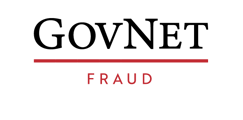Insider threats pose a significant risk to public sector organisations, compromising sensitive information and undermining trust. These threats can stem from employees, contractors, or anyone with authorised access to government systems and data. Detecting and mitigating insider threats is crucial for safeguarding public sector operations and maintaining security. Here’s a comprehensive guide on how to address this critical issue.
Understanding Insider Threats
Insider threats can be broadly categorised into two types:
- Malicious Insiders: Individuals who intentionally misuse their access for personal gain, financial benefit, or other malicious purposes.
- Negligent Insiders: Individuals who unintentionally cause harm through careless actions, such as falling for phishing scams or mishandling sensitive information.
The Importance of Detecting Insider Threats
Detecting insider threats early is vital to preventing potential damage. Unlike external attacks, insider threats can be harder to identify because they often come from trusted individuals. Therefore, public sector organisations need to implement robust detection mechanisms to identify suspicious activities and mitigate risks promptly.
Effective Detection Strategies
-
User Behaviour Analytics (UBA): Utilising advanced analytics to monitor and analyse user behaviour patterns can help identify anomalies indicative of insider threats. UBA tools can detect unusual access times, data transfers, and other suspicious activities.
-
Access Controls and Monitoring: Implement strict access controls to ensure that employees only have access to information necessary for their roles. Regularly monitor access logs and review permissions to detect and prevent unauthorised access.
-
Data Loss Prevention (DLP) Tools: Deploy DLP solutions to monitor and control the transfer of sensitive data. These tools can flag suspicious data movements, such as large file transfers or access to restricted information.
-
Regular Audits and Reviews: Conduct periodic audits and reviews of systems, data access, and user activities. Regular audits help identify discrepancies and potential insider threats that might go unnoticed during daily operations.
-
Employee Monitoring Software: Implement software that tracks employee activities on work devices. This can include monitoring email communications, file access, and internet usage. Ensure that this monitoring complies with legal and ethical standards.
Mitigating Insider Threats
-
Comprehensive Employee Training: Educate employees about the risks of insider threats and the importance of cybersecurity best practices. Regular training sessions can help employees recognise potential threats and understand their role in maintaining security.
-
Robust Security Policies: Develop and enforce strict security policies regarding data access, usage, and sharing. Clearly communicate these policies to all employees and ensure they understand the consequences of violations.
-
Implement a Zero Trust Model: Adopting a Zero Trust security model means that no one is trusted by default, regardless of whether they are inside or outside the network. This approach requires continuous verification of user identities and access privileges.
-
Incident Response Plan: Develop a comprehensive incident response plan that includes procedures for addressing insider threats. Ensure that employees know how to report suspicious activities and that there are clear steps for investigating and mitigating threats.
-
Encourage a Culture of Security: Foster a workplace culture that prioritises security. Encourage employees to report suspicious behaviour and create an environment where security concerns are taken seriously and addressed promptly.
Conclusion
Insider threats represent a significant challenge for public sector organisations, but with the right strategies, they can be effectively detected and mitigated. By leveraging advanced technologies, implementing strict access controls, and fostering a culture of security awareness, public sector entities can protect sensitive information and maintain the trust of the public they serve. Proactive measures and continuous vigilance are key to staying ahead of insider threats and ensuring robust fraud prevention.

Nicole Lummis
After a career in Project Management, I realised how important it was for me to pursue a career with a more creative career path. I have a passion for creating engaging digital content whether through written content or the use of image, graphics or videos.


